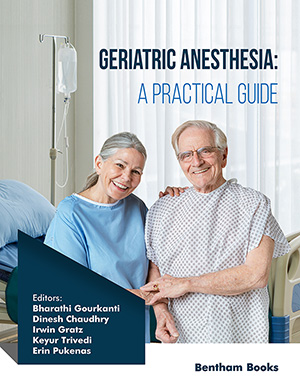Abstract
The incidence of end-stage renal disease (ESRD) has almost doubled over past 2 decades. Despite decreasing overall hospital admission rates for ESRD population, the rate of infection-related hospitalizations has steadily increased. Infection remains the second most common cause of mortality in this patient population. Specifically, in the hemodialysis (HD) patients, the vascular access related infections are the most common identifiable source of infection. This concise review provides an update on the bacteremia related to vascular access primarily the catheters (Catheter Related Blood Stream Infection- CRBSI) in HD patients emphasizing on the determinants ranging from the epidemiology to pathogenesis, risk factors, cost implications and prevention. Staphylococcus aureus, coagulase negative Staphylococci, and Enterococci are the most common causative microorganisms implicated in CRBSI. The pathogenesis of CRBSI includes organism entry into the blood stream followed by adherence to catheter, colonization and biofilm formation. Vascular access type, catheter position, and prior bacteremic episodes are strongly associated with blood stream infection. Preventive measures should be multidisciplinary in nature and should include avoidance of central venous catheters, best practices for catheter care, surveillance, antimicrobial catheter lock solutions, and use of antibiotic impregnated catheters.
Keywords: Hemodialysis, vascular access, bacteremia, prevention, Fistula first, Catheter associated bacteremia.
Infectious Disorders - Drug Targets
Title:Infection and Hemodialysis Access: An Updated Review.
Volume: 13 Issue: 3
Author(s): Vineet Gupta and Mohamed H. Yassin
Affiliation:
Keywords: Hemodialysis, vascular access, bacteremia, prevention, Fistula first, Catheter associated bacteremia.
Abstract: The incidence of end-stage renal disease (ESRD) has almost doubled over past 2 decades. Despite decreasing overall hospital admission rates for ESRD population, the rate of infection-related hospitalizations has steadily increased. Infection remains the second most common cause of mortality in this patient population. Specifically, in the hemodialysis (HD) patients, the vascular access related infections are the most common identifiable source of infection. This concise review provides an update on the bacteremia related to vascular access primarily the catheters (Catheter Related Blood Stream Infection- CRBSI) in HD patients emphasizing on the determinants ranging from the epidemiology to pathogenesis, risk factors, cost implications and prevention. Staphylococcus aureus, coagulase negative Staphylococci, and Enterococci are the most common causative microorganisms implicated in CRBSI. The pathogenesis of CRBSI includes organism entry into the blood stream followed by adherence to catheter, colonization and biofilm formation. Vascular access type, catheter position, and prior bacteremic episodes are strongly associated with blood stream infection. Preventive measures should be multidisciplinary in nature and should include avoidance of central venous catheters, best practices for catheter care, surveillance, antimicrobial catheter lock solutions, and use of antibiotic impregnated catheters.
Export Options
About this article
Cite this article as:
Gupta Vineet and Yassin H. Mohamed, Infection and Hemodialysis Access: An Updated Review., Infectious Disorders - Drug Targets 2013; 13 (3) . https://dx.doi.org/10.2174/1871526511313030008
| DOI https://dx.doi.org/10.2174/1871526511313030008 |
Print ISSN 1871-5265 |
| Publisher Name Bentham Science Publisher |
Online ISSN 2212-3989 |
 126
126
- Author Guidelines
- Graphical Abstracts
- Fabricating and Stating False Information
- Research Misconduct
- Post Publication Discussions and Corrections
- Publishing Ethics and Rectitude
- Increase Visibility of Your Article
- Archiving Policies
- Peer Review Workflow
- Order Your Article Before Print
- Promote Your Article
- Manuscript Transfer Facility
- Editorial Policies
- Allegations from Whistleblowers
- Announcements
Related Articles
-
Scintigraphic Imaging of Inflammatory Processes
Medicinal Chemistry Reviews - Online (Discontinued) Linezolid Induced Skin Reactions in a Multi Drug Resistant Infective Endocarditis Patient: A Rare Case
Current Drug Safety Lantibiotic Production by Pathogenic Microorganisms
Current Protein & Peptide Science Proteomics of Biofilm Bacteria
Current Proteomics Adenovirus Mediated Herpes Simplex Virus-Thymidine Kinase/Ganciclovir Gene Therapy for Resectable Malignant Glioma
Current Gene Therapy Occurrence and Clinical Impact of Microembolic Signals (MES) in Patients with Chronic Cardiac Diseases and Atheroaortic Plaques - A Systematic Review
Current Vascular Pharmacology Drug-Induced Thromboembolic Events in Patients with Malignancy
Cardiovascular & Hematological Disorders-Drug Targets Probiotics: From Functional Foods to Pharmaceutical Products
Current Pharmaceutical Biotechnology Nano-zinc Coordination with the Ligands of Carboplatin, Oxaliplatin and Nedaplatin. Synthesis, Characterization and Biological Properties
Letters in Organic Chemistry Buprenorphine and Buprenorphine/Naloxone Diversion, Misuse, and Illicit Use: An International Review
Current Drug Abuse Reviews Effectiveness of Antiviral and Immunomodulatory Agents in the Treatment of COVID-19: A Systematic Review
Current Respiratory Medicine Reviews The Impact of Methodology and Confounding Variables on the Association Between Major Depression and Coronary Heart Disease: Review and Recommendations
Current Psychiatry Reviews Systematic Reviews of Animal Experiments Demonstrate Poor Contributions Toward Human Healthcare
Reviews on Recent Clinical Trials A New Binding Site Involving the C-terminal Domain to Design Specific Inhibitors of PepX
Protein & Peptide Letters Heart Failure in Acute Ischemic Stroke
Current Cardiology Reviews Fibrinogen Signal Transduction as a Mediator and Therapeutic Target in Inflammation:Lessons from Multiple Sclerosis
Current Medicinal Chemistry The Cancer Related Thrombotic Tendency in Sepsis
Current Drug Targets The Bovine Basic Pancreatic Trypsin Inhibitor (Kunitz Inhibitor): A Milestone Protein
Current Protein & Peptide Science Withdrawal Notice: Therapeutic Options for Treatment of COVID-19: A Review from Repurposed Drugs to New Drug Targets
Current Drug Targets Systemic Fungal Infections Caused by Candida Species: Epidemiology, Infection Process and Virulence Attributes
Current Drug Targets























